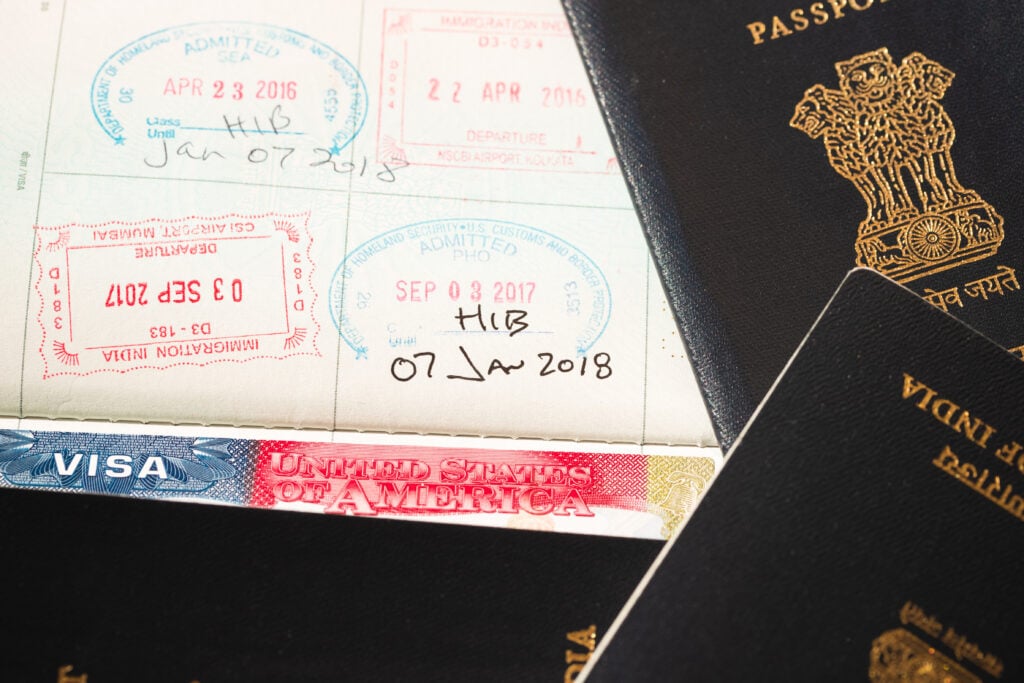What is a State Department Travel Advisory?

Traveling is a fun experience. However, as travelers, it is also our responsibility to be careful and keep up with events going around the world. Events can affect travel plans, whether you are planning something for next month or next year.
In 2020, I planned to visit Beirut, Lebanon, to visit family working for the State Department. Unfortunately, there was an explosion at the Port of Lebanon, and a travel warning was put in place for US citizens. While I knew I would be safe there with my family, I ultimately decided it would be best to postpone the trip.
But what exactly is a State Department travel advisory, and why should we pay attention to it?
Purpose of a Department of State Travel Advisory
When you’re planning your next big adventure, be sure to check out the US Department of State Travel Advisories first. They’re packed with vital information about the conditions in a country that could affect your safety and security. These advisories also reflect the measures taken to protect US government personnel overseas.
In essence, these advisories are your guide to a safe and seamless journey. They not only provide us with up-to-date information on any risks or security concerns in our chosen destination but also ensure we know the necessary precautions to take.
Consider these advisories as your go-to resource for a stress-free and fully enjoyable travel experience.

Travel Advisory vs Travel Warning
Going on the State Department website can seem overwhelming. There are all kinds of terms and warnings that it’s hard to know what to look for or what to pay attention to. But it would help if you understood the difference between the two and what they mean for your travel plans.
When looking for information for an upcoming trip, consider these three terms: Travel Alerts, Travel Advisory / Warning, and Worldwide Caution.
Travel Alerts:
Travel alerts are issued for short-term risks that might affect your travel plans. These could include health concerns, weather events, or mass protests. Alerts are a “heads-up” about specific safety and security concerns in certain countries. They are usually temporary.
Note that Travel Alerts can turn into travel advisories or travel warnings at any moment if the event that caused them escalates. For this reason, it is essential to watch any travel alerts for a location you are interested in visiting.
Travel Advisories (or Travel Warnings):
On the other hand, travel advisories provide information about a country’s long-term, high-risk safety and security concerns. The US Department of State uses a four-level ranking system to help travelers understand the level of risk in each country. The advisory also explains why the advisory was issued, using codes to give you a better picture of what is happening.
I go into more detail about this ranking system below.
Worldwide Caution:
In addition to alerts and advisories, a Worldwide Caution is issued by the US State Department. This caution provides general information and specific recommendations on preparing for potential terrorist attacks, political violence, criminal activities, and other security incidents that could happen without warning.
Remember that conditions can change quickly in any given country. Be prepared and always plan ahead!
State Department Travel Advisory Levels
The travel advisories are categorized into different levels based on each country’s safety and security situation. Here are the levels explained:
Level 1: Exercise Normal Precautions – The lowest safety and security risk advisory level.
Level 2: Exercise Increased Caution – Be aware of heightened risks to safety and security.
Level 3: Reconsider Travel – Avoid travel due to serious risks to safety and security.
Level 4: Do Not Travel – This is the highest advisory level due to the greater likelihood of life-threatening risks.
In addition, the travel advisory system explains why the advisory was issued by using one-letter codes:
| Letter Code | Meaning | Example |
| C | Crime | Burglary |
| T | Terrorism | 9/11 |
| U | Civil Unrest | Protest |
| H | Health Risk | Covid |
| N | Natural Disaster | Hurricane |
| E | Special Event | Election |
| O | Other Reason | Varies |
State Department Travel Warning List
The US Department of State has created a long list of countries and areas they feel have some level of caution for Americans to travel to. Currently, the list has over 200 travel advisories, including some to popular travel destinations like France, Greece, Italy, the Bahamas, and more.
Just because there’s a warning or alert for a country doesn’t mean you should avoid the entire country. Security levels can vary from region to region, and it’s important to read warnings closely to understand the specific nature of the threat.
For example, while there might be drug-related violence in some parts of Mexico, popular tourist destinations like Cancun and Puerto Vallarta are not affected.
Some countries might also have a Level 1 advisory, meaning to exercise standard precautions, but no immediate or specific threat is currently present.
It’s also good to be aware that other countries also create their own travel advisories. If you are visiting a different country, you should also check their advisories, as they may have warnings for other reasons.
Travel warnings issued by other countries can also affect Americans. It’s a good idea to look at government websites from the United Kingdom, Canada, and Australia for country-by-country advice on security.
These warnings issued by other countries can give you a clearer picture of where you’re going and help you make a decision you’re comfortable with.
Airline Travel Advisories
All these major airlines – American Airlines (AA), Southwest Airlines, United Airlines, and Delta Airlines – are on your side when it comes to dealing with the unexpected.
They offer travel alerts to keep you in the loop on short-term events that could disrupt your travel plans. If severe weather or other uncontrollable events throw a wrench in your plans, these airlines have your back, providing options to change your trips with no extra fees.
Plus, they make it easy to adjust your flights, either online or with a quick call to reservations or customer service. While specific details might vary from airline to airline, the bottom line is the same: they’re all about giving you the information and flexibility you need to have a smooth journey.
Just be sure to check each airline’s website for the most accurate, up-to-date information.

Does a Travel Alert Mean My Flight Will Get Cancelled?
A Travel Alert nor a Travel Advisory will not cancel your flight. Remember that the US Department of State places travel advisories and not the individual airlines.
When an airline gives a travel alert, they take this information from the State Department and give you improved flexibility for changing your flight, postponing your flight, or avoiding cities experiencing bad weather.
If your destination is at a Level 3 advisory or higher, I recommend using your airline’s flexible policy to reschedule at a safer time.
Safety Tips
If you choose to travel despite a State Department warning, remember there are resources out there. You can enroll in the Smart Traveler Enrollment Program (STEP) to receive security messages and be located by the US government in case of an emergency.
Also, don’t forget to connect with your friends and family. Leaving your information and travel plans with someone you know will help in case of any type of emergency.
I always screenshot all my flights and hotel reservations and send them to my husband so he knows how to reach me.
FAQ: State Departement Travel Adviosories
What is the difference between a Travel Advisory and a Travel Warning?
Travel alerts are issued for short-term events that might affect your travel, such as health outbreaks or natural disasters. They are temporary and meant to make you aware of specific risks.
On the other hand, travel warnings are issued for long-term, chronic threats in a country, and they advise you to carefully consider whether you should travel there.
What does it mean when your flight has a travel advisory?
If your flight has a travel advisory, that means that the airline is aware of a travel advisory, such as weather. Some advisories may also come from the State Department. Be sure to check for more details and use the flexible rebooking policies.
What countries are on the State Department travel warning list?
Almost every country is on the travel warning list. However, there are four different levels. Level 1 countries are still okay to visit. You will just need to exercise normal precautions when traveling.
Why do countries issue travel advisories?
Travel advisories are put in place to update travelers on conditions in any given country of safety and security concerns.
What are Level 4 countries?
Some of the current Level 4 countries include Afghanistan, Belarus, Iran, Iraq, Haiti, Syria, Ukraine and Yemen, to name a few.
What is an example of a travel advisory?
A country may have a travel advisory if there are risks to travelers, such as an unstable government, war, ongoing crime, or risk of terrorist attacks. If any of these risks are present, please reconsider changing your travel plans to a later date.

Conclusion: What is a State Department Advisory?
Alerts by the US Department of State are in place to keep you safe and make informed decisions. However, a worldwide alert from the State Department doesn’t mean you should stay at home.
These alerts are published to inform citizens about potential risks they may encounter during their travels. They should be used as a tool to help you make informed decisions about your journey.
Please take these advisories seriously to keep you safe, but don’t be afraid to travel!